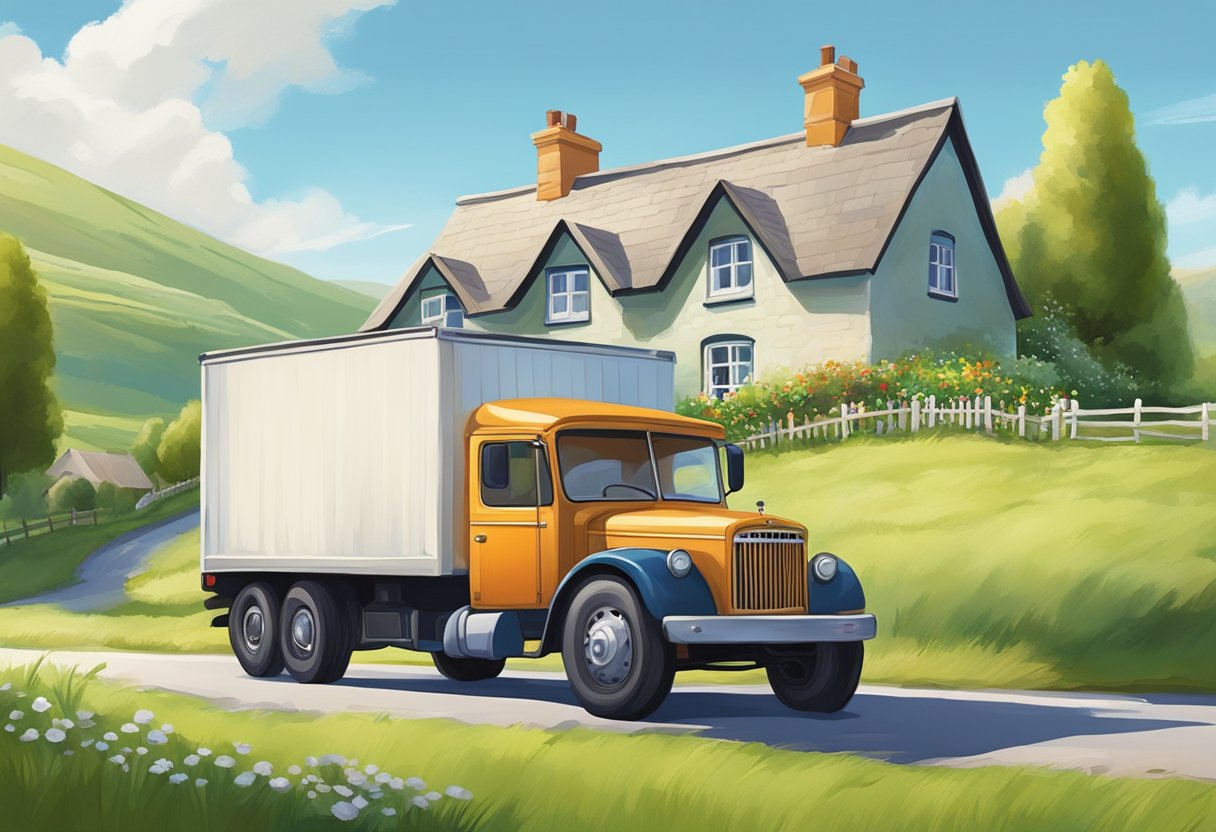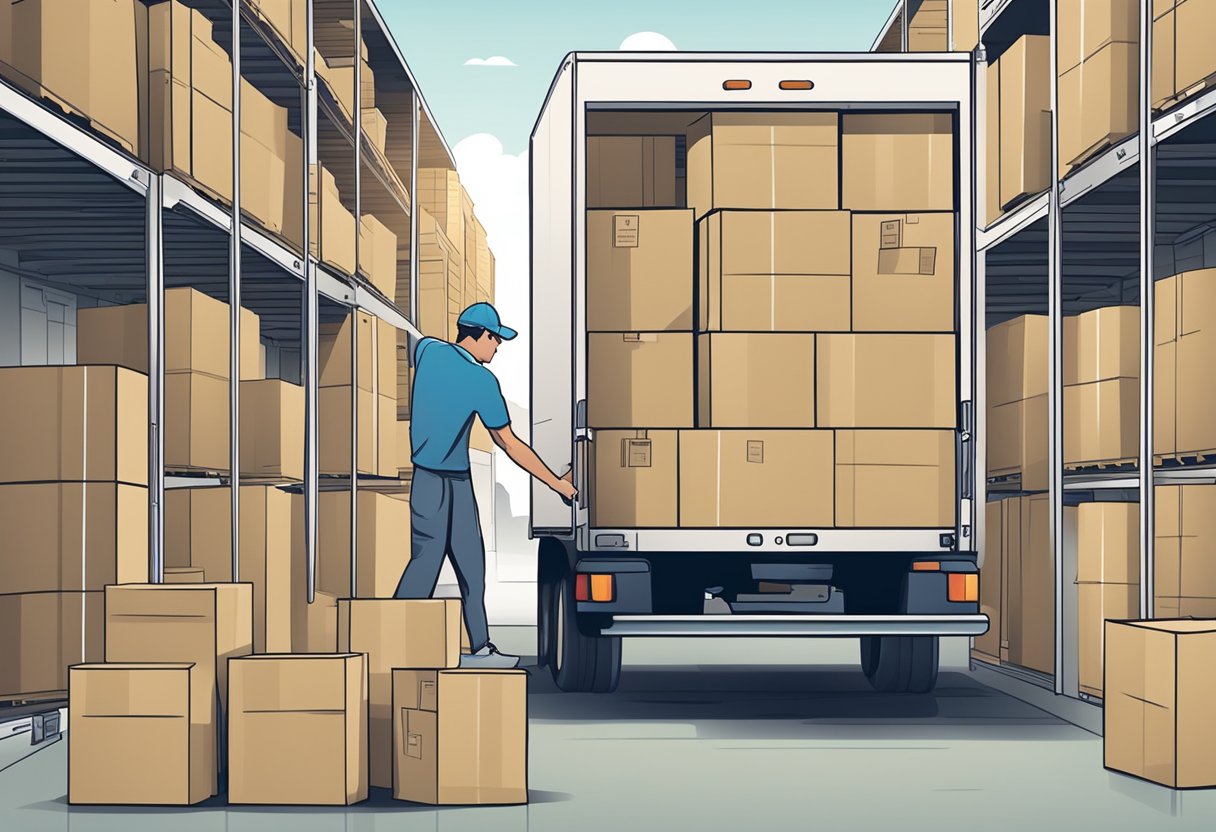Moving house in Ireland can be quite the adventure, filled with both excitement and challenges. To make this transition as smooth as possible, the key is to stay organised and plan ahead. Start by creating a detailed moving checklist to keep track of everything you need to do. This will help you manage tasks such as booking a removal company, setting up utilities, and notifying important contacts of your change of address.

A comprehensive checklist for moving house can ensure you don’t miss any critical steps, from decluttering to securing your belongings. Many find that beginning preparations at least two months in advance makes a significant difference. Booking time off work before and after your move can provide some much-needed breathing room. Staying methodical will reduce the stress and help you focus on other important aspects like finding a new school for your children or changing the locks on your new home.
Before you know it, moving day will arrive. Ensure that you’ve labelled all your boxes and have a plan for where everything will go in your new home. This simple step can save a lot of time and hassle once you start unpacking. With a bit of preparation and some thoughtful planning, your move can be a stress-free experience, and you’ll be settled into your new Irish home in no time.
Preparing to Move

Preparing for a move in Ireland requires careful planning and organisation. Key steps include decluttering your home, gathering packing supplies, and considering whether to hire professional movers.
Decluttering Your Home
Decluttering helps make packing easier. Start by sorting your belongings into three categories: keep, donate, and dispose of. This approach will help you identify what you truly need to bring to your new home.
Tip: Focus on one room or area at a time to avoid feeling overwhelmed. Pay special attention to:
- Clothing and shoes
- Books and magazines
- Kitchen items and small appliances
- Furniture and home decor
Consider donating usable items to charity shops or organising a car boot sale. Dispose of broken or unneeded items responsibly. Decluttering not only reduces the amount of stuff to pack but can also save on moving costs.
For example, consider hiring a man with a van service to help with the transportation of donated items or larger pieces of furniture. Moreover, when you’re done sorting, look into house clearance services that can help you remove unwanted items efficiently. Understanding the cost of self storage can also be beneficial if you need temporary storage for items that you plan to keep but can’t immediately move.
Gathering Packing Supplies
Having the right packing supplies is crucial for a smooth move. Start by acquiring sturdy boxes in various sizes. You will also need bubble wrap, packing paper, strong tape, and markers for labelling.
Here’s a basic checklist:
- Boxes: New or recycled, assorted sizes
- Bubble Wrap: For fragile items
- Packing Paper: To wrap delicate items
- Tape: Strong, preferably brown packing tape
- Markers: For labelling boxes
Don’t forget to pack an essentials box with items you’ll need immediately upon arrival, such as toiletries, basic kitchen supplies, and important documents. Label each box clearly with its contents and destination room to make unpacking more manageable.
Hiring Professional Movers
Professional movers can make your move less stressful. Begin by researching reputable moving companies. Ask for recommendations, read reviews, and compare quotes from multiple movers.
Consider:
- Insurance: Ensure your belongings are covered during the move. Check if the moving company offers insurance or if you need to purchase an additional policy.
- Notice Period: Book your moving service well in advance to secure your preferred date and time, especially during peak moving seasons.
- Budget: Get an itemised quote to understand the costs involved. Make sure to factor in any additional services, such as packing assistance or storage solutions. For instance, if your new home isn’t ready yet, you might need temporary storage. Many people find storage units in places like Navan helpful for keeping their items safe during the transition.
Hiring professionals can save you time and effort, allowing you to focus on settling into your new home.
Packing Strategies

Having a well-thought-out plan for packing can save you time and stress. Key strategies like creating an inventory, labelling boxes clearly, and taking special care of appliances and electronics are crucial.
Creating an Inventory
Creating an inventory helps keep track of everything. Start by listing items room by room. This provides a clear picture of what you have and ensures nothing is left behind.
Use a spreadsheet or a moving app to record each item. Include details such as the condition of the item and its value. Group similar items together for easier reference. This step is especially useful when claiming insurance for lost or damaged items.
Keep a printed copy of the inventory for quick access. An updated list is helpful during unpacking to ensure everything has arrived safely.
Labelling Boxes Correctly
Labelling boxes correctly makes unpacking much smoother. Use permanent markers to write directly on the boxes or use printed labels for a cleaner look.
Clearly mark each box with its contents and the room it belongs to. For example, “Kitchen – Pots and Pans”. Colour-coding with tape or stickers can also be helpful. Assign a colour for each room to make identification easier.
For sensitive items like electronics or fragile items, add labels such as “Handle with Care” or “Fragile”. This alerts movers to be extra cautious. Proper labelling prevents confusion and speeds up the moving process.
For example, if you’re handling something delicate like a piano, look for specialised services for piano moving in Dublin to ensure it’s transported safely.
Special Care for Appliances and Electronics
Appliances and electronics need special handling to avoid damage. For large appliances like fridges and freezers, clean and defrost them at least 24 hours before moving. Secure doors with tape to prevent them from opening during transport.
Use bubble wrap and foam to protect screens and delicate parts. Pack smaller electronics like tablets and remotes in their original boxes if possible, adding extra padding for safety. Remove detachable parts, such as shelves or trays, and pack them separately.
Make sure cords and cables are bundled and labelled to avoid tangling. This also makes setting up easier at your new home. Handling these items with care ensures they arrive in good working order.
On Moving Day
Moving day can be exciting but also a bit stressful. Having a good plan and being well-prepared can make everything go much more smoothly.
Essential Items to Keep Handy
It’s best to have a box with essential items that will be needed right away. This box should include:
- Toilet roll
- Soap
- Important documents
- Basic utensils like plates and cutlery
- Teabags and snacks for quick breaks
- Cleaning supplies
Having these essentials ready will save time and prevent unnecessary stress. Also, keep your phone chargers, medication, and keys accessible. Knowing where these are will be a big help during those first few hours in your new home.
Final Checks and Clean-up
Before leaving the old house, conduct one last check to ensure nothing is left behind. Look through all rooms, cupboards, and any hidden spots. Make a checklist to ensure every task is completed.
- Unplug appliances and make sure they’re ready for transport.
- Do a final meter reading.
- Take out any remaining rubbish and leave the place clean.
This will help avoid any issues with landlords or new owners. Leaving the house in good condition respects those who will move in next.
Navigating the Actual Move
When the movers arrive, coordinate with them to load the van efficiently, starting with the big items. Ensure that:
- Fragile items are clearly marked.
- Belongings are packed securely to avoid damage.
Stay calm and assist where needed, directing movers to the correct rooms at the new house. Transport of belongings should be organised to prevent losing anything. Parents should keep children busy, and pets should be secured in a safe area away from the hustle.
Trying to keep a positive attitude can go a long way in reducing stress during the moving process. Be prepared for unexpected issues and handle them calmly. With a bit of patience, the move will be less overwhelming and smoother.
Setting Up the New House

Moving into a new home can be both exciting and stressful. It’s important to address utility connections, unpack efficiently, and create a welcoming environment to truly settle in.
Addressing Utilities and Services
One of the first tasks is to set up utilities and services. This includes electricity, gas, water, and broadband. Contact local providers ahead of time to arrange transfers or new connections.
For electricity and gas, ensure you know the meter readings when you first move in. This helps avoid being billed for the previous tenant’s usage. Some providers in Ireland offer dual-fuel plans, which bundle electricity and gas, potentially saving you money.
Broadband setup is essential too. Compare different internet service providers to find the best deal and get it installed as soon as possible. It’s also a good idea to register with the local council, ensuring your water meter is correctly set up.
Unpacking and Organising Rooms
Start unpacking with essential rooms like the kitchen, bathroom, and bedroom. Unpack the necessities first – items like toiletries, bedding, and cooking essentials.
Get friends or family to help with unpacking; it can make the process faster and more enjoyable. Label all your moving boxes clearly, so you know what’s in each box and which room it belongs to.
Use this time to decide on your furniture arrangement. It’s easier to move things around before heavy boxes and items are fully unpacked. Organising each room step-by-step helps in avoiding clutter and chaos.
Making Your House a Home
Small touches can make a new house feel like home. Start by putting up familiar photos or artwork. These personal items bring comfort and make the space uniquely yours.
Introduce yourself to the neighbours. This can create a sense of community and help you settle in. Essential documents should be stored in a secure and easily accessible place, such as a dedicated drawer or filing cabinet.
Consider setting up some plants in various rooms. They add life and colour, making spaces more inviting. Finally, take the time to relax and enjoy your new home, gathering the family for a welcome dinner or a cosy movie night.
Adjusting After the Move

Once the move is complete, attention turns to settling into your new home. Key tasks include updating your legal and official information and integrating into your new community.
Updating Legal and Official Information
First on the list is changing your address. Notify An Post to forward your mail to your new address. This can be done online or at the post office. This ensures you don’t miss any important mail.
Next, inform Revenue about your new address. Update your records to receive tax-related documents at your new home. Contact any relevant government agencies to change your address on your driving licence, passport, and other official documents.
Notify your bank, credit card companies, and insurance providers of your new address. This helps prevent any interruptions in important communications.
Remember to update your address with your doctor, dentist, optician, and vet. This ensures you can access medical and veterinary care without any hassle. If you’ve moved to a different area, you may need to register with new healthcare providers.
Integrating Into Your New Community
Getting involved in local activities is a great way to settle in. Attend community events and introduce yourself to your neighbours. Joining local clubs or groups that match your interests can help you make new friends.
If you have children, new schools are a priority. Transfer their records and help them adjust by encouraging them to join school clubs and activities. Meeting other parents can also help you feel connected.
Explore your new area to locate nearby shops, parks, and services. Knowing where everything is will make your day-to-day life smoother and make you feel more at home.
Building a relationship with your estate agent can also be helpful. They might provide local insights and recommendations for services like plumbers or gardeners.
Don’t forget to find a new GP, dentist, and vet if you’ve moved out of the area. Registering early ensures you have access to healthcare when needed.
By taking these steps, settling into your new home and community in Ireland can be a smooth and positive experience.


